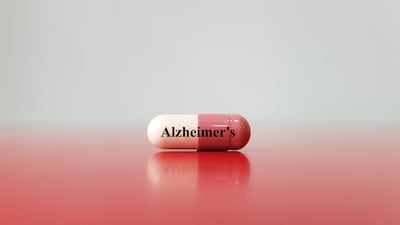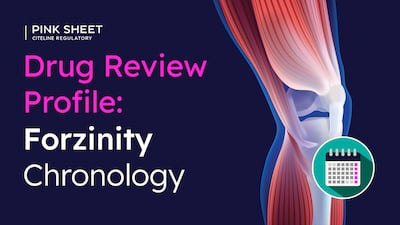Approvals
The European Medicines Agency has said that Anavex’s Alzheimer’s candidate should not be authorized for use in the EU due to safety and efficacy concerns. Seven other products, including two new cancer drugs, received positive opinions.
The first approval under the Commissioner's National Priority Voucher, a re-introduction of domestic production of an antibiotic, took two months to clear, but the timeline will be more challenging for the three pending CNPV applications with efficacy claims.
Several global products have been granted approval recommendations in Japan, while two Japan-originated drugs received a preliminary nod in their home country after being approved first elsewhere through licensees.
The Pink Sheet's list of EU centralized approvals of new active substances has been updated to include two new products, one of which is Lynkuet, Bayer's treatment for moderate to severe vasomotor symptoms associated with menopause or endocrine therapy for breast cancer.
A new reliance pathway under which regulators will rely on each other’s assessment reports strengthens the goals of key continental health initiatives, including the newly formed African Medicines Agency.
Denecimig, Novo Nordisk’s prophylaxis treatment for hemophilia A, is among the latest products that have been filed for review by the European Medicines Agency for potential EU marketing approval.
The European Medicines Agency has begun evaluating the EU marketing applications for a new batch of drugs, including products from Incyte, Sanofi and Novo Nordisk that target hidradenitis suppurativa, rabies and hemophilia A, respectively.
The orphan drug share of US FDA’s 2025 novel approvals is holding steady, with examples of approvals based on a single trial with confirmatory evidence from UCB, Precigen, Jazz Pharmaceuticals and Stealth Biotherapeutics
A cluster of CRLs for rare disease applications based on one trial plus confirmatory evidence may represent a shift away from the regulatory flexibility that had come to characterize ultra-rare drug development
Ohtuvayre is off to a great start in the US but Verona's new owner MSD has pulled the EU marketing application from the European Medicines Agency for the closely-watched chronic obstructive pulmonary disease drug.
While the European Medicines Agency’s human medicines committee voted in favor of EU approval for 10 new products, it reaffirmed its previous decision not to grant Aqneursa new active substance status.
The European Medicines Agency has recommend approving Teizeild, paving the way for the first disease modifying treatment for type 1 diabetes in the EU.
New Zealand is also lifting its prohibition on advertising unapproved medicines at medical conferences and trade shows in order to boost its appeal as a host for such events and generate millions of dollars in revenue.
The EMA has scheduled oral explanation meetings this week for Anavex’s blarcamesine and three other products that are nearing the end of the regulatory review cycle. These meetings usually represent the final chance for sponsors to persuade the agency that their product merits approval.
Regulatory reliance processes for drug registration and clinical trial application approvals in Brazil have not met their “full potential,” says Brazil’s medicines regulator.
The sponsors of a number of drugs could this week learn whether the European Medicines Agency will recommend in favor of approving their products. And while teplizumab was approved in the US in 2022, Sanofi told the Pink Sheet why it waited to submit the drug for regulatory review in the EU.
Real-world evidence (RWE) studies in India face challenges like lack of data reliability and uniformity and absence of clear guidelines but firms like Bharat Serums have scored a regulatory win. Pink Sheet examines the RWE landscape and the BSV case study for lessons in beating the odds
FDA reviewers cited several limitations of the videos, including a lengthy recall period, use of the term “today” in questions, and a lack of standardization in interview conduct.
The Pink Sheet’s Drug Review Profile looks at the clinical development and US FDA review timeline for Stealth's elamipretide for Barth syndrome.
Stealth BioTherapeutics' diligent response to the FDA’s accelerated approval suggestion, its justification for proposed confirmatory trial milestones, and the rarity of Barth syndrome gave the agency confidence to grant approval before the postmarketing study began.




















